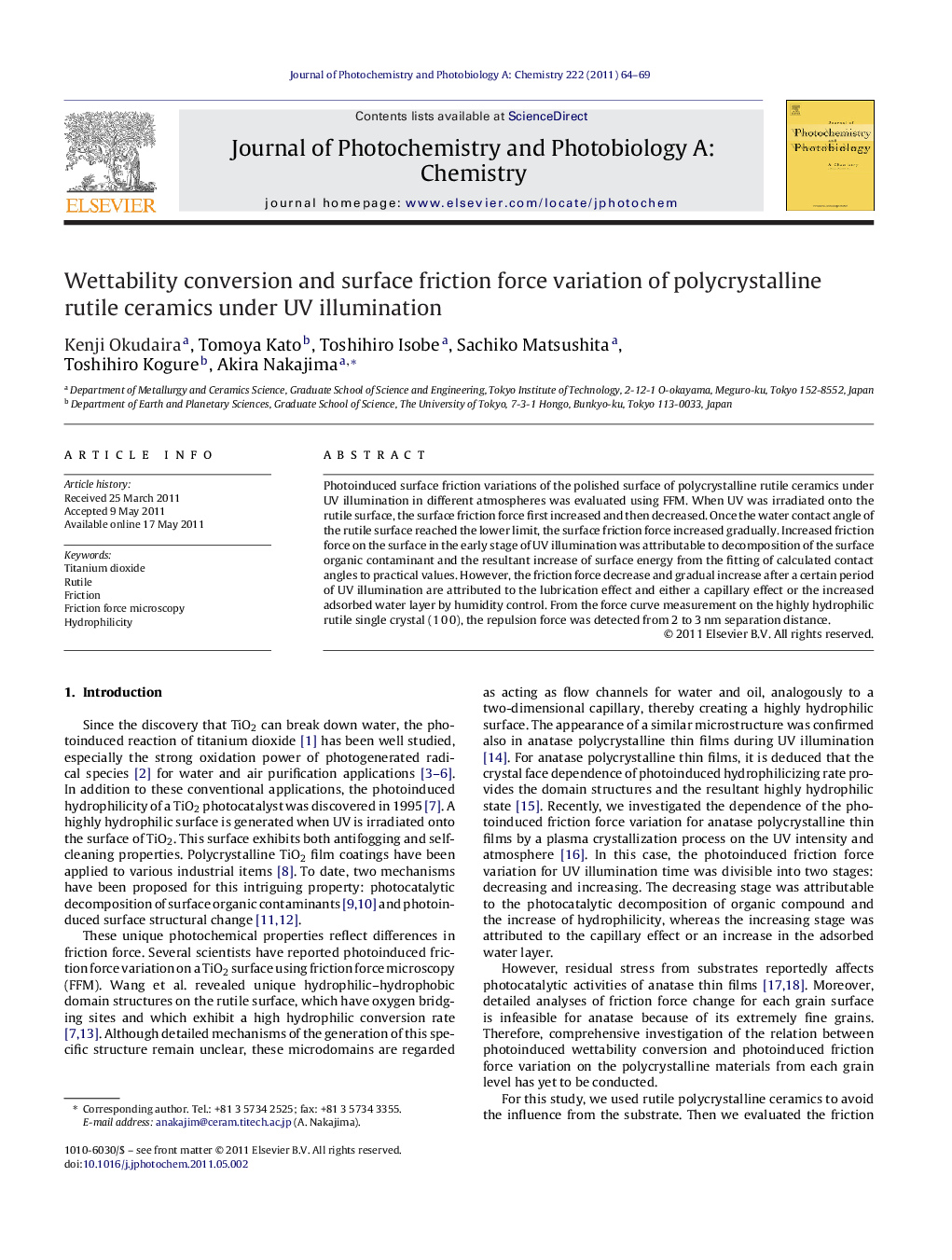| Article ID | Journal | Published Year | Pages | File Type |
|---|---|---|---|---|
| 27363 | Journal of Photochemistry and Photobiology A: Chemistry | 2011 | 6 Pages |
Photoinduced surface friction variations of the polished surface of polycrystalline rutile ceramics under UV illumination in different atmospheres was evaluated using FFM. When UV was irradiated onto the rutile surface, the surface friction force first increased and then decreased. Once the water contact angle of the rutile surface reached the lower limit, the surface friction force increased gradually. Increased friction force on the surface in the early stage of UV illumination was attributable to decomposition of the surface organic contaminant and the resultant increase of surface energy from the fitting of calculated contact angles to practical values. However, the friction force decrease and gradual increase after a certain period of UV illumination are attributed to the lubrication effect and either a capillary effect or the increased adsorbed water layer by humidity control. From the force curve measurement on the highly hydrophilic rutile single crystal (1 0 0), the repulsion force was detected from 2 to 3 nm separation distance.
► The photoinduced friction force variation of rutile ceramics is divisible into three stages. ► Those are related to photocatalytic decomposition and subsequent water adsorption. ► The repulsion force appeared from a 2–3 nm distance on rutile surface by UV illumination.
